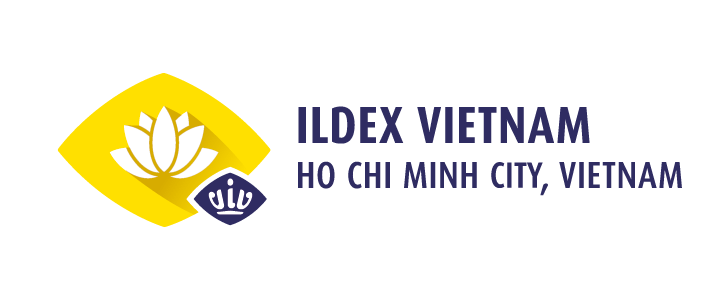Overview of Vietnam’s agriculture and Aquaculture in the first 5 months of 2023
The estimation of total export value of Vietnam’s agriculture, forestry and fisheries in the first 3 months of 2022 to Asian markets will reach 5.46 billlion USD. The total import turnover of agricultural, forestry and fishery products in March 2023 is estimated at 3.87 billion USD (increase 0.6% compared to March, 2022), which bring up the total import value in the first 3 months to reach 9.44 billion USD, a decrease of 7.2% compared to that of over the same period in 2022.
- Agricultural and Aquacultural market in Vietnam:
Breeding, processing and exporting meat
The export value of livestock products in March 2023 was evaluated at 47.4 million USD, bringing the total export value of livestock products in the first 3 months of 2023 to 114.9 USD million, increasing 46.5% compared to the figure for the same period in 2022. Accumulating 4 months, the export value of livestock products achieved 156 million USD.
In February 2023, the export value of Vietnam’s slaughtered poultry meat to other markets reached more than 1.6 million USD, double that of January 2023 and exceeded 86.5 thousand USD than in the same period in 2022, in which, Korea is the largest poultry meat import market with 28.6% market share, Malaysia accounts for 24.8% market share, the rest are China, Hong Kong, etc.
In the first 5 months, products with higher export value than the same period previous year such as meat and by-products USD 58 million, increased to 59.1%. (6)
Livestock production is generally developing steadily, and the epidemic of livestock and poultry diseases is strictly controlled. Deputy Minister of Agriculture and Rural Development Phung Duc Tien said, ‘These actions create favorable conditions for livestock development. Poultry flocks have an average growth rate of over 6.3% over the past 5 years, total flocks reach more than 550 million heads; and also ensure food supply for domestic consumption as well as promote export and protect human health.’
Cattling buffaloes and cows in the month is stable. Pig farming recovered because the disease was well controlled, farmers were proactive in breeding stock, and live pork prices showed signs of improvement.
Vietnam’s Aquaculture
Fisheries export value in March 2023 is estimated at 720 million USD, bringing that number in the first 2 months of 2023 to 1.79 billion USD, a decline of 29% compared to the same period in 2022.
Japan, the US and China are the 3 three staple export markets of Vietnamese fishery in the first two months of 2023, accounting for 43.9% of the total value of seafood exports. In the first 2 months of 2023, seafood export value decreased in most of the main markets except the Philippines (+41.5%). In 2023, ASEAN countries will continue to be potential and promising destinations for Vietnamese seafood exporters.
Aquaculture activities have gained positive results due to the effective application of high-quality shrimp farming model. Aquaculture production in the month was estimated at 421 thousand tons, up increasing by 2.5% compared to the same period last year. The catches in the month was estimated at 362.3 thousand tons, an growth of 1.8% over the same period last year due to favorable fishing ground weather along with stable gasoline and oil prices compared to the previous year, hence it explains many positive changes in exploiting.
- Some policies of the Government of Vietnam
Promoting digital transformation and innovation in science and technology, innovation in industry and fisheries; Enterprises take the initiative to develop, design their own products with unique models, improve quality and diversity, suitable for a wide range of customers instead of just processing to order following the designs of the foreign’s.
Focus on removing difficulties for businesses by implementing policies related to VAT refund; support associations to effectively organize exhibitions on furniture and fisheries, trade promotion, especially in mass markets, the most emerging market is the niche market.
Focusing on trade promotion, market expansion, continuing to negotiate and sign trade agreements with potential partners; strive to protect trademarks, import and export items in the international market when there is a commercial dispute.
- Some orientations on science and technology in the livestock and aquaculture industry
Currently, there are many policies for livestock development such as: policies on breeding support, disease prevention, product consumption association; restructuring the livestock industry; bring digital transformation into the livestock industry promptly to have a remarkable transition in the coming time. Strengthening the capacity of the Department of Livestock Production and implementing a number of key scientific and technological research programs and topics are applied to serve the research on solutions to promote livestock efficiency in the new situation.
Focusing on synchronously directing livestock solutions in the way of biosecurity, disease safety, good husbandry practices on livestock, especially pig, poultry, beef cattle; coordinate with the Department of Animal Health and localities in implementing disease prevention and control, such as African swine fever, foot-and-mouth disease, avian flu, skin rash, etc.
In accordance, continuing to implement the contents of building a circular, bio-safe and organic production chain to improve product value. Carrying on building a model of building national identification code for livestock production facilities, trace the origin of livestock products; technical training and building biosafety livestock models.
There are a number of technical and technological advances in aquaculture, such as: Seed production technology of key cultured species has been improved and stabilized to meet market demand. The quantity and quality fingeling of pangasius, lobster, molluscs and tilapia have basically been raised and stabilized to meet production demand; the proportion of quality brackish water shrimp filgerling produced in the country has increased significantly, promptly serving the domestic market demand, with black tiger shrimp fingeling initially being exported to countries such as Indonesia, Thailand, and Bangladesh, etc. The world’s advanced farming technology such as circulating feeding, flowing water feeding, indoor feeding, biofloc technique … are widely applied. In particular, biofloc technology is widely applied in coastal localities to raise brackish water shrimp, bringing high economic efficiency and preventing a number of diseases on farmed shrimp, reducing environmental pollution, etc. There are more than 2,000 aquaculture establishments in nearly 50 provinces and cities nationwide that have been transferred and applied this technique.



